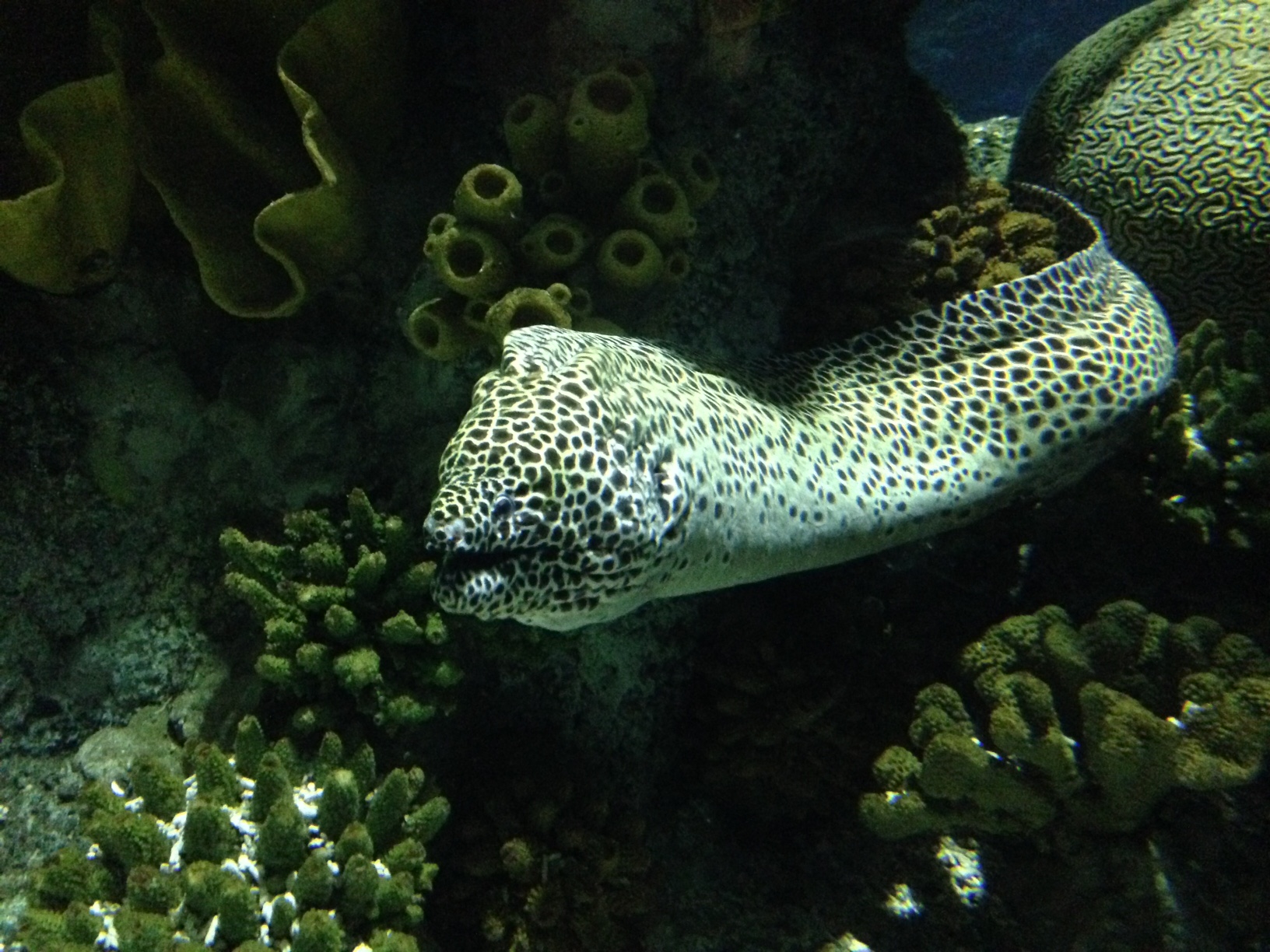
Honeycomb moray eels (Gymnothorax favagineus) get their name from the white-yellow body with black spots which give them the appearance of a honeycomb. The spots are unique to each individual in terms of size and shape and can also vary depending on where they live. Though their long body looks like that of a snake, they are actually a fish!
Moray eels are carnivores, eating only meat, and will hunt whatever they can find. What makes these eels exceptional predators is that they have not one, but two sets of jaws! These second set of jaws, known as pharyngeal jaws, are thought to have inspired a sci-fi movie or two, and are used to help grasp prey and pull it back into the stomach. The jaws are located in the back of the throat, which are pushed forward when needed. As well as their fearsome teeth, the moray eels also rely on their excellent sense of smell to track down their meal. These territorial fish are generally not aggressive, but will defend their space from intruders.
Moray eels are most commonly seen with their mouth opening and closing, which is not a threatening display but is important for drawing in water. This water then flows over the gills, which extracts the oxygen needed for respiration.
The life cycle of an eel is something we actually know very little about, even with all of our modern day technology. It is currently thought that all eel species reproduce in the Sargasso Sea with baby eels hatching into their larval stage, which is thin and leaf-shaped, and floating in the open ocean for several months. Only a small percentage of the larval will reach maturity, which is around 3 years of age, as they are preyed upon by a wide range of predators. Moray eels can live for around 30 years.
Type
Fish
What do they eat?
Fish, crustaceans and cephalopods
Size
1.5m
Water Type
Tropical Marine
Where are we?
Indo-Pacific
